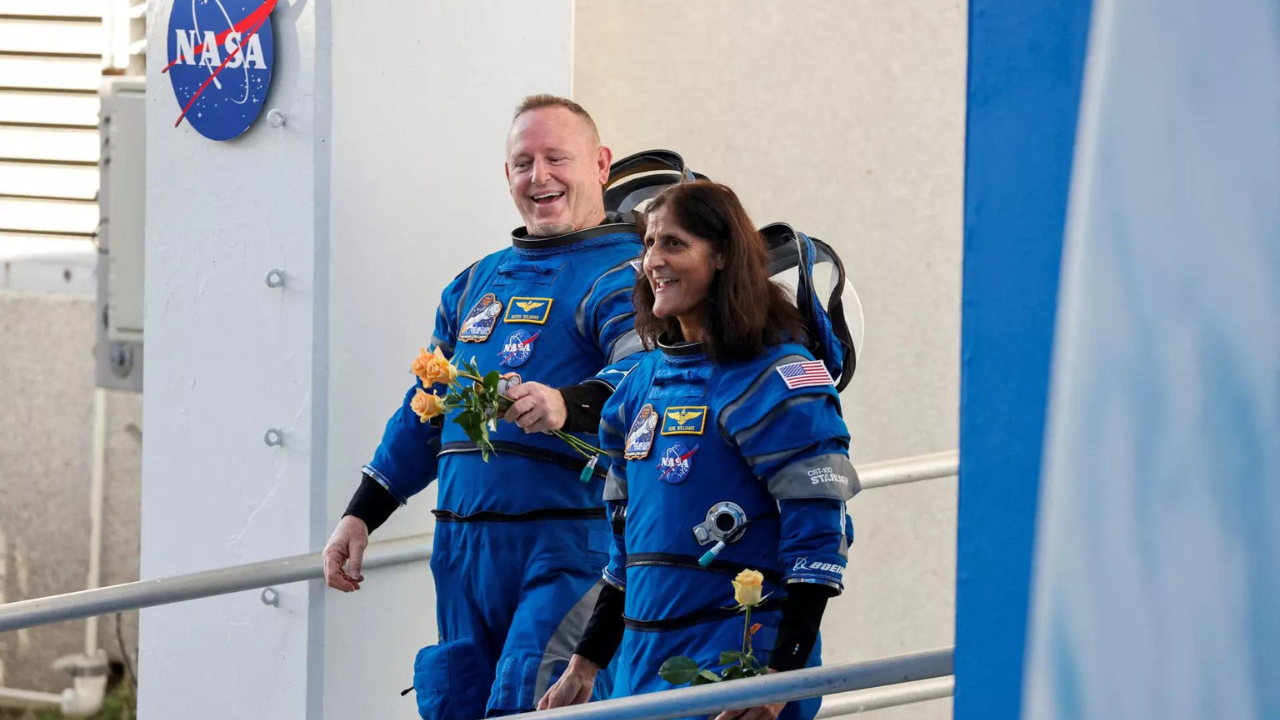In a statement, Steve Stich, manager of NASA’s Commercial Crew Program, said, “We are taking our time and following our standard mission management team process,” according to ABC News report.The launch date was later set for May 25. However, a small helium leak was found in the service module, which comprises support systems and instruments for operating a spacecraft, media reported. The Starliner arrived at the ISS on June 6.
Both astronauts have been stuck in space for a good part of the month.
Spending time in space has profound effects on the health of astronauts due to the unique environment characterized by microgravity, radiation exposure, confined living conditions, and isolation. These factors impact nearly every system of the human body, leading to both short-term adaptations and long-term health considerations.
One of the earliest and most significant changes astronauts experience is fluid redistribution in microgravity. Without the constant pull of gravity, fluids shift towards the upper body, causing facial puffiness and congestion, and decreasing fluid volume in the legs and feet. This fluid shift can also lead to a decrease in blood volume and changes in blood pressure regulation. Over time, these adaptations can affect cardiovascular function, potentially leading to orthostatic intolerance upon return to Earth, where astronauts may experience dizziness or fainting upon standing.
How yoga elevates overall well-being
Microgravity also affects the musculoskeletal system, causing muscle atrophy and bone loss. Astronauts experience a rapid decrease in muscle mass, particularly in the lower body and back muscles, as they no longer need to support body weight. Additionally, bones undergo demineralization due to reduced mechanical loading, resulting in decreased bone density, similar to conditions seen in osteoporosis on Earth. Exercise routines and equipment on the International Space Station (ISS) help mitigate these effects, but some bone loss still occurs.
Changes in fluid distribution can affect the urinary system, with some astronauts experiencing an increased risk of kidney stones due to higher concentrations of calcium in urine. Furthermore, altered metabolism in microgravity can impact nutrient absorption and utilization. Studies have shown changes in hormone levels, insulin sensitivity, and even gut microbiota composition in space, which may influence long-term health outcomes.
The absence of gravity alters sensory input, leading to changes in spatial orientation, balance, and eye-hand coordination. Some astronauts experience Space Motion Sickness (SMS) during the first few days in orbit, characterized by symptoms like nausea, vomiting, and disorientation. This adaptation typically resolves as astronauts acclimate to their new environment.
Prolonged exposure to microgravity results in significant bone density loss, particularly in weight-bearing bones like the pelvis, spine, and femur. Studies have shown that astronauts can lose up to 1-2% of bone mass per month during extended missions. This bone loss is similar to osteoporosis and poses a challenge for future deep space missions where astronauts may spend years in microgravity.
Muscle atrophy continues throughout prolonged space missions despite exercise countermeasures. While astronauts can mitigate some muscle loss with vigorous exercise routines, maintaining muscle mass remains a challenge. This loss affects both skeletal muscles and the heart muscle, potentially impacting physical performance and overall health.
Another long-term health concern for astronauts is visual impairment, particularly in relation to changes in intracranial pressure and fluid distribution in the brain and eyes. Some astronauts have reported vision impairments, such as hyperopic shift (far-sightedness) and optic disc edema. The exact mechanisms behind these changes are still under investigation, but they highlight potential risks to visual health during long-duration missions.
Beyond microgravity-related effects, astronauts are exposed to higher levels of radiation in space compared to Earth’s surface. Galactic cosmic rays and solar particle events pose risks of DNA damage and increased cancer risk. Radiation exposure limits space missions to ensure astronauts’ cumulative exposure remains within acceptable levels.
To mitigate these health effects, space agencies employ rigorous exercise regimes, nutritional monitoring, and medical monitoring during and after missions. Advances in technology and biomedical research continue to refine countermeasures and improve our understanding of the physiological and psychological challenges of space travel.


